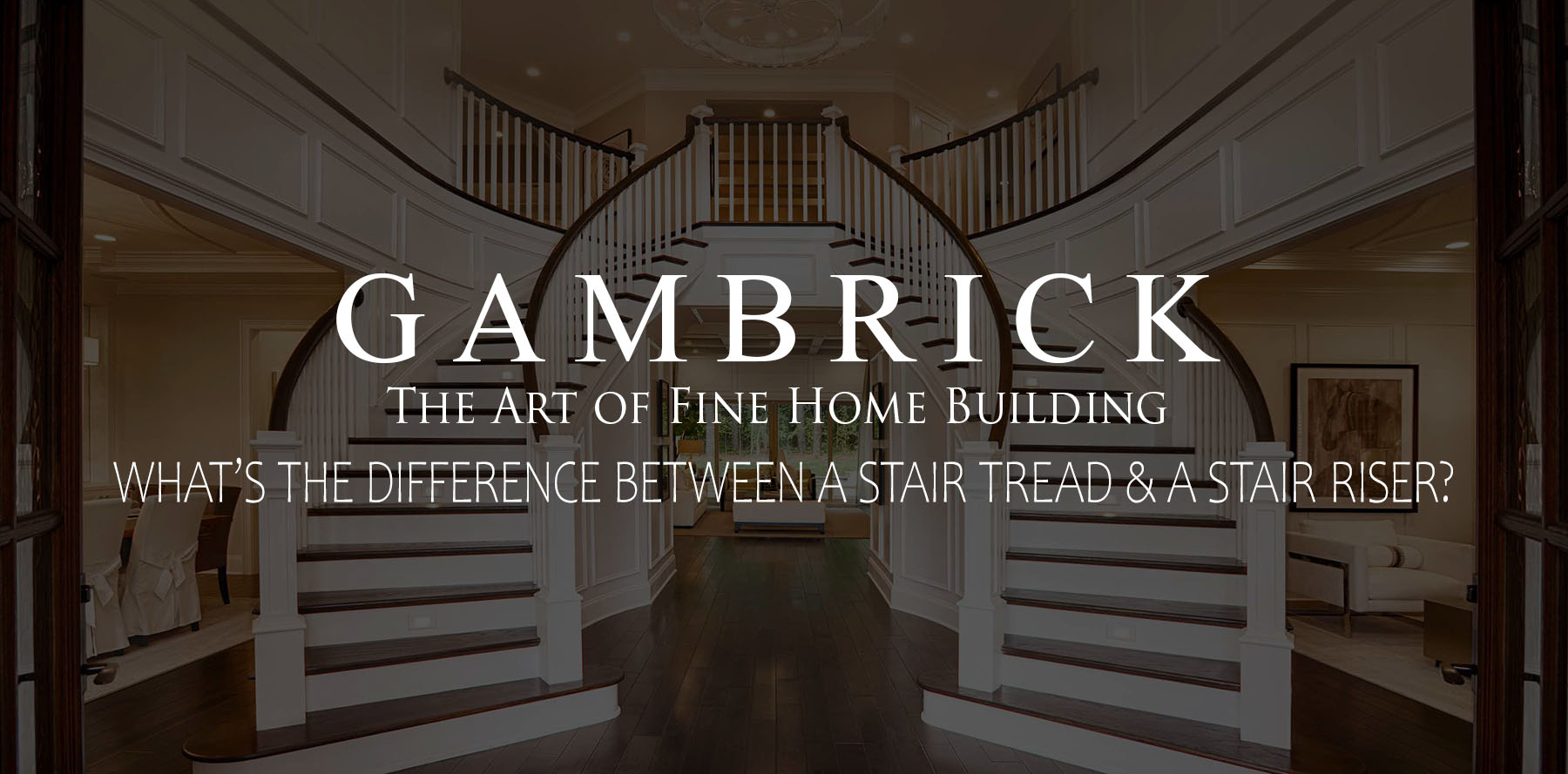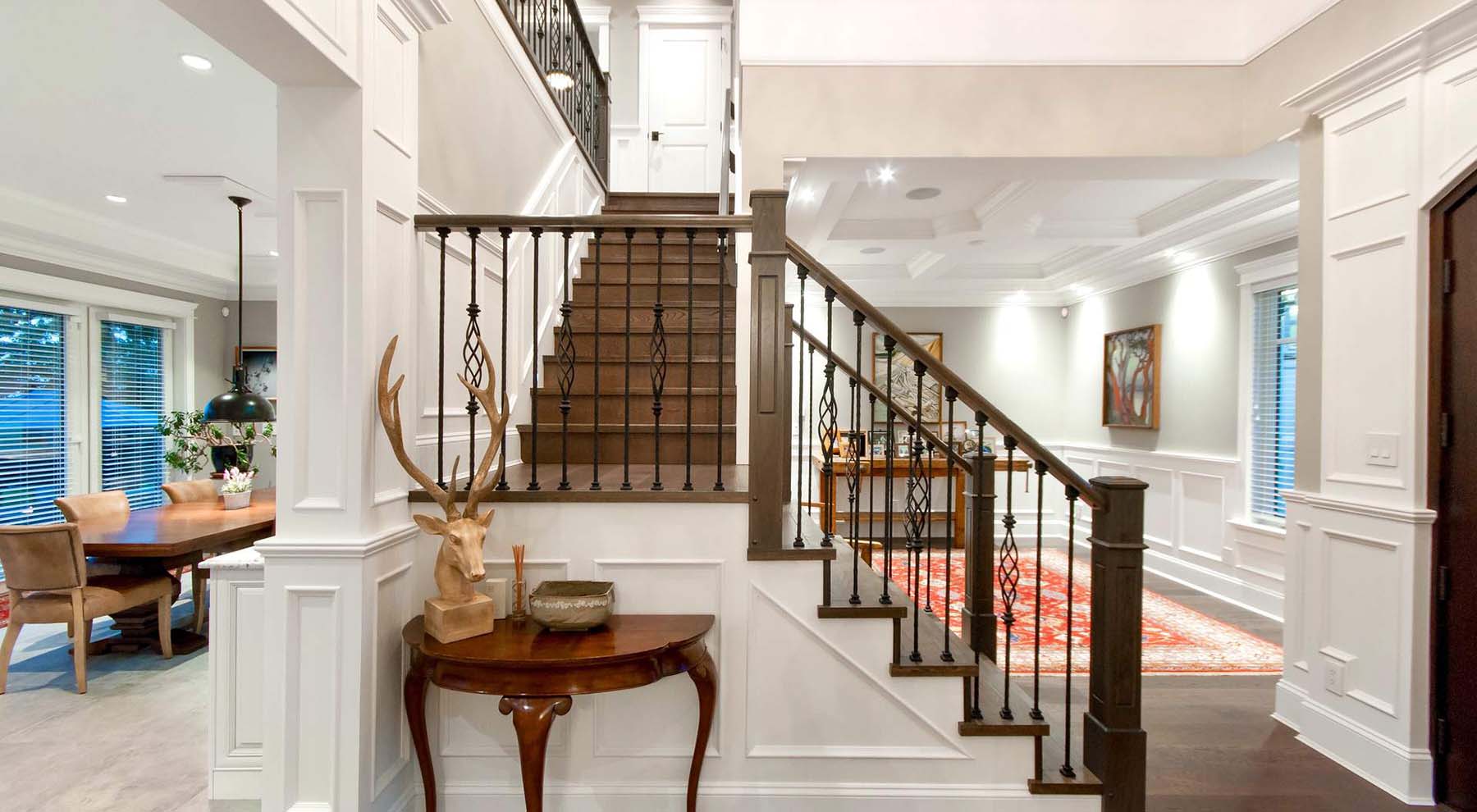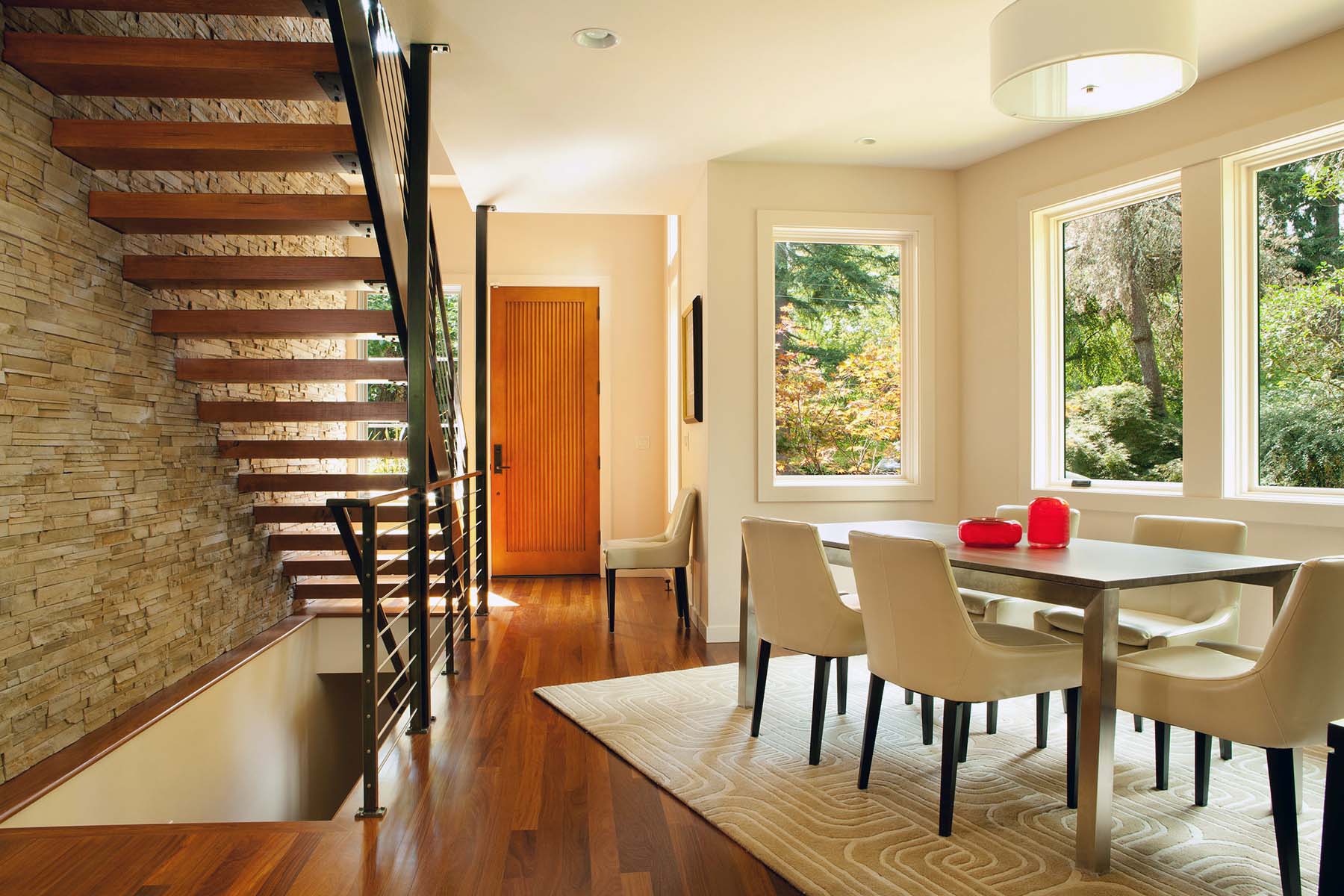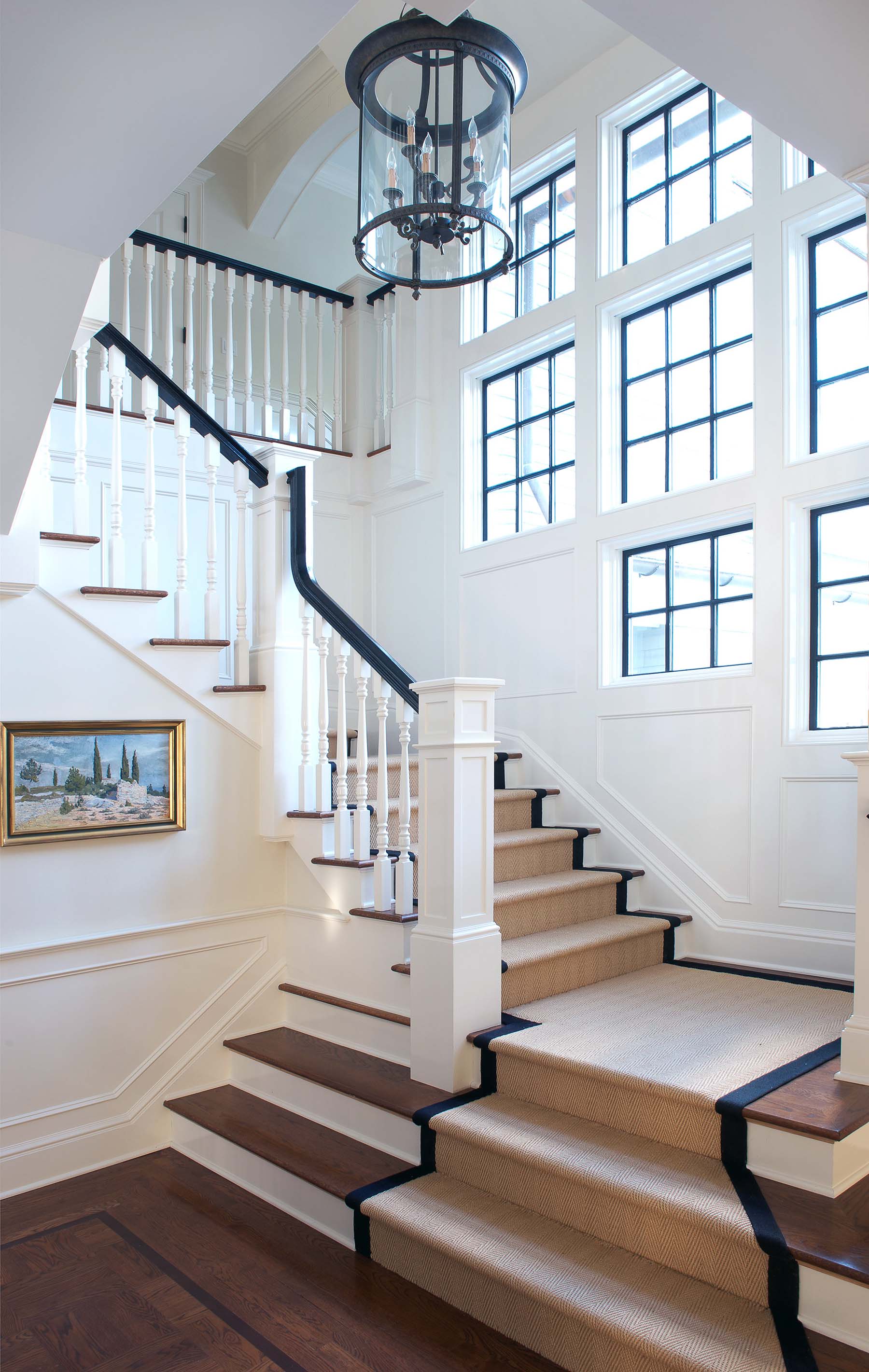What’s The Difference Between A Stair Tread & A Stair Riser?
Every day people walk up and down stairs without giving much thought as to what the different parts of stairs are called. But when your building a new home, remodeling, or flipping some real estate, knowing the basics about what makes up a set of stairs will come in handy. The day may come when you actually have to design a custom set of stairs or repair an old one. You’ll need to know basic things like what’s the difference between a stair tread and a stair riser? What are stair risers on stairs? And what are stair treads? The treads and risers are two of the main parts of every set of stairs. It doesn’t matter if your dealing with the stairs in a multi million dollar luxury home or a simple front porch. Stair parts are all exactly the same.
Understanding the difference between a stair tread and a stair riser and how they work together is important. Both when designing and building stairs. In this article we’ll go over all this and more and hopefully by the end give you a good understanding of all the parts that make up a beautiful staircase.
What Are Stair Treads?
The stair tread is the part of the stairs that you step on. It’s most commonly called the step. When you look at a set of steps, in technical terms what your looking at are the treads. They can be made from numerous materials including wood, metal, glass and masonry. Stair treads, in combination with the risers, help to form stairs.
The depth, or the distance from the front of the tread to the back, is part of the calculation builders think about when designing stairs. The size of each tread is more than just about comfort it’s also about safety. Treads that are too shallow don’t give you enough room to safely plant your feet while you’re walking up or down the stairs. These kinds of stairs will feel steep and unsafe. You might be more likely to slip or miss a stair. A good example of this are pull down attic stairs, they feel more like a ladder but are technically considered stairs.
However an overly deep tread can make it uncomfortable to walk up and down on. You’ll have to take unnaturally wide steps to go up and down each step or take two steps. Either way will feel uncomfortable and again won’t be safe.
Stair treads have a sweet spot of around 10 1/2 – 12 inches. Stick with this measurement when designing your stairs. In NJ this measurement range is code. Check with your local building department before designing stairs but as a general rule this range is prefect. It’s based on the distance the average person covers with each step and works great for adults and kids.
Each stair tread has to be the exact same depth.
Stair Treads: An In Depth Look
As a builder we need to take a more in depth view of stair treads and how they’re made since stair designs will vary from home to home.
- Walled End – This end of the stair tread is placed against the wall and can also be referred to as the “closed end.” If both sides touch the wall then you’ll have 2 walled ends.
- Face – The finished walking surface of the stair tread where you place your foot.
- Return -The edge of the stair tread you see from the side if the stairs don’t touch a wall. Both sides of the tread can have a return if neither side touches a wall. In builder terms we call this an open staircase.
- Bull Nose – The rounded surface or “nose” of each tread. Found along the front edge and also along side edges of return treads. The bull nose sticks out a bit from the riser. Each step shouldn’t have a bull nose that extends out more than an inch to the front or they become a tripping hazard.
What Are Stair Treads Made Of?
Stair treads can be made out of a wide variety of materials. Wood is most common for interior staircases. Masonry products like brick, concrete or limestone are good choices for exterior steps along with decking or fiberglass. Metal is also used for spiral staircases or modern designs.
What Are Stair Risers?
Almost every set of stairs has a riser for each step. Stair risers are the vertical piece of each step. You can easily spot the risers because they’re often painted white. The height of each step is called the rise. Builders use rise calculations to design safe and comfortable sets of stairs. Now, all stairs have a rise, but they may not all have risers. For example, Modern staircases often have open designs allowing you to see through the staircase instead of having a piece of wood to form a riser.
The height, or rise, of each step also affects comfort and safety. If each step is too high or too low, it can be tough and dangerous to walk up and down. You might stub your toe on the top edge by taking big steps or trip because of all the tiny ones. A high rise can be dangerous for young kids with short legs and a short one is terrible for adults. The sweet spot for risers is 7 – 8 inches.
Risers are often referred to as kick boards or kick plates as they tend to get kicked by the front of your foot as you walk up the stairs.
As with stair treads each riser has to be the exact same measurement or they risk become a tripping hazard.
White Stair Risers
White Risers add a classic look to almost any home at an affordable price. They’re considered standard fair in the vast majority of homes built here in NJ. Whether it’s a classic country style home with the old world appeal of oak treads and white risers or a colonial that needs a white riser to provide a sharp, clean break between the bold colors of a stair runner. White risers look great in almost any application.
White stair risers are a form of closed risers.
Wood Stair Risers
Another popular choice for risers is stained wood. Oak treads with an oak step is a traditional, classic stair design that’s been in style for hundreds of years. Just make sure if this is the way you decide to go that it fits the house. White stair risers is by far the more popular choice but wood fits a more traditionally styled home.
Open Stair Risers
An open riser staircase is one in which the rise, a.k.a., the vertical part of the step between each tread, is open rather than closed. This design offers unobstructed views between treads so you can see through the staircase. Considered a modern staircase design which is a popular choice in contemporary homes.
The open riser staircase design offers a modern and airy feel while giving the perception of a larger space. With endless design options, they can be incorporated into both straight and curved staircases for interior and exterior projects.
Check with local codes as some regions don’t allow an open riser staircase as some consider it a tripping hazard.
The same exact codes apply regarding rise and tread dimensions as with closed riser designs.
How Stair Risers And Stair Treads Work Together
The dimensions of the treads and risers work together to determine how steep the staircase is. When designing stairs, builders look at how the rise and run work together to create stairs that are easy to use and safe. A high rise and a small tread make for a very uncomfortable and dangerous set of stairs because you have to take a high step with little space for your foot to land. No one would want to use a staircase with these dimensions every day.
A very low rise paired with a deep step can be just as uncomfortable to climb although safer than a steep set of steps.
Remember when designing stairs to check your local building codes. These codes usually have specific regulations for building stairs which ensures they’re safe.
How To Calculate Riser Heights
The standard stair dimensions we use include risers that are 7 – 8 inches high and treads that are 10 12 inches deep. If you’re building a set of stairs from scratch, you’ll want to start with the total height or vertical distance from the landing at the top to the landing at the bottom. Divide that distance by seven, which is the typical minimum height. That tells you how many stairs you’ll need.
Once you have the total number of stairs figured out you divide the total height by that number. For a 6 foot high deck, or 72 inches, you’d divide 72 by seven to get 10.3. So 10 stairs would work well for this project. Now divide the 72 inch total height by 10 steps to get 7.2. Each step would need to have a rise of 7.2 inches.
Pro Tip: The deck itself counts as a step. So in the example shown above even though there are 10 steps you only need to build 9. The 10th step is the deck your stepping on to.
Pro Tip: Make sure to convert your decimal point to inches. That 7.2 inches we came up with in the example above is actually 7 13/64″, we’d round that to 7 3/16″.
Understanding the difference between the stair tread and riser makes your home improvement project easier. You can more effectively calculate the rise and run of your stairs and make sure you meet the local building codes with a solid understanding of the two.
Conclusion
What’s The Difference Between A Stair Tread & A Stair Riser? Having a good understanding of both stair treads and stair risers and how they work together to create a beautiful, comfortable and safe set of stairs is important if your planning on being a good home designer. Remember the things you design and build not only have to look great, they more importantly need to be functional and safe.
If you have any questions or comments e-mail us any time. We’d love to hear from you.

























